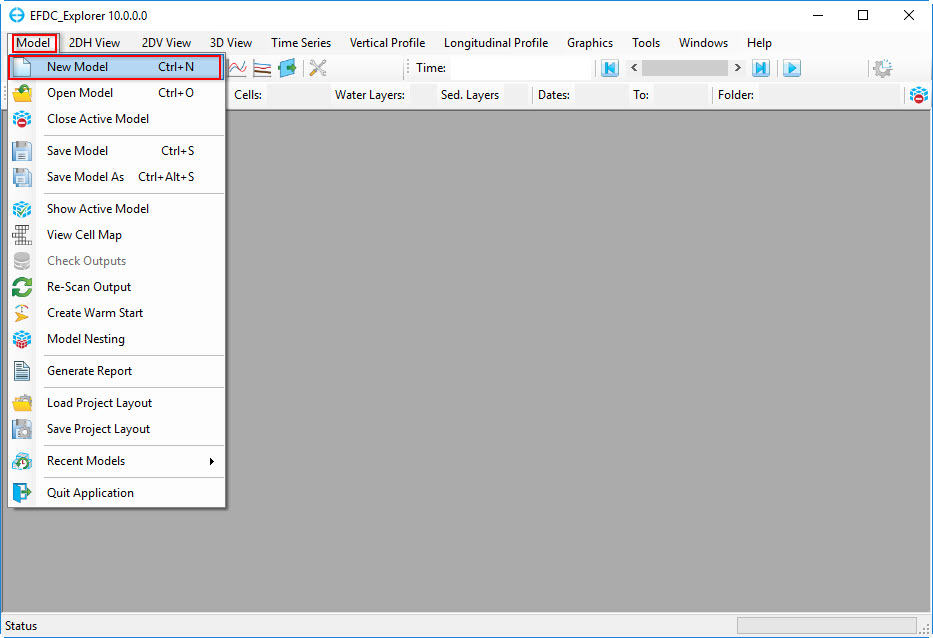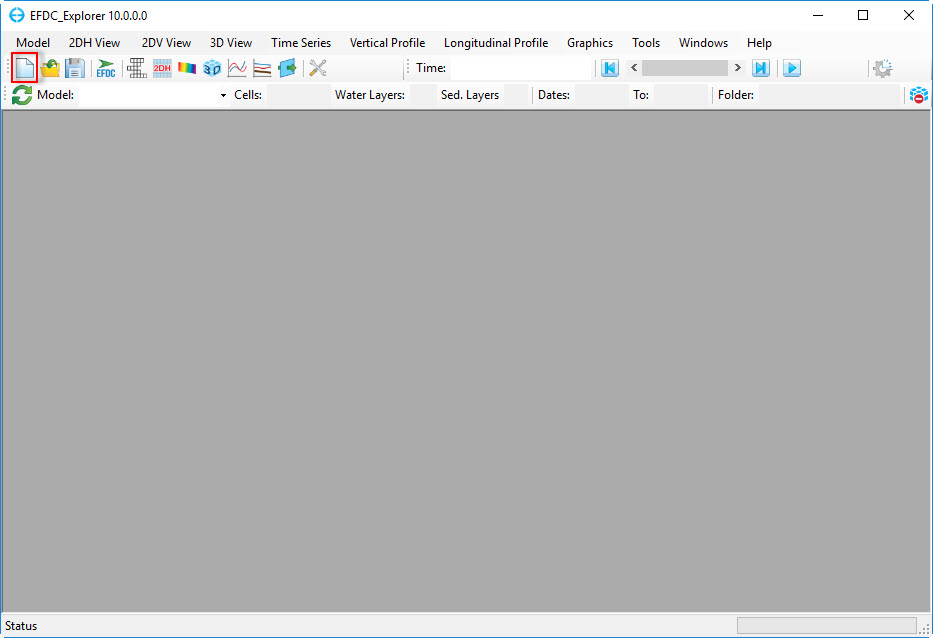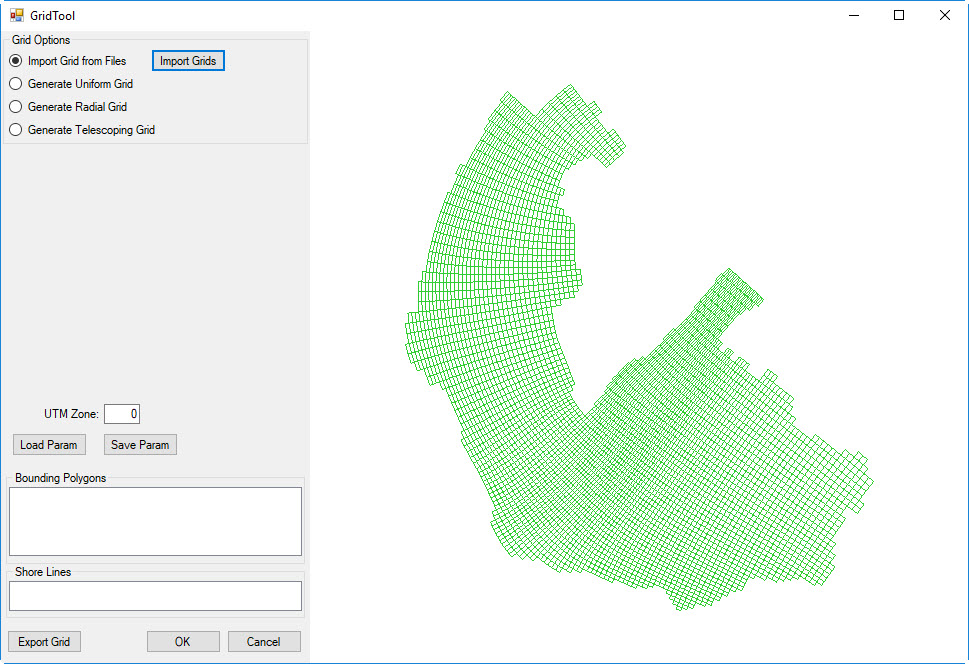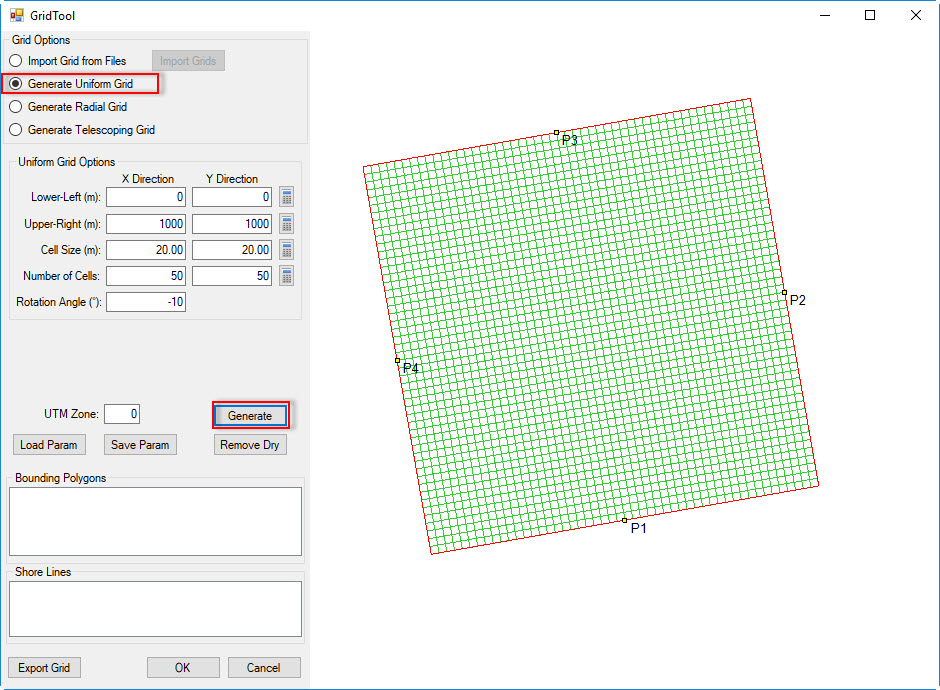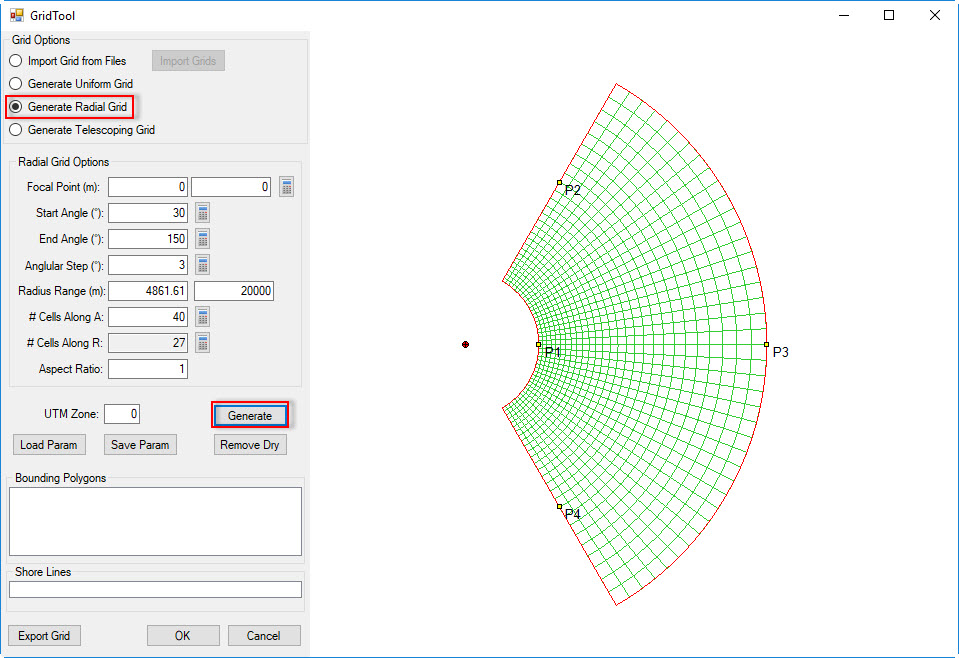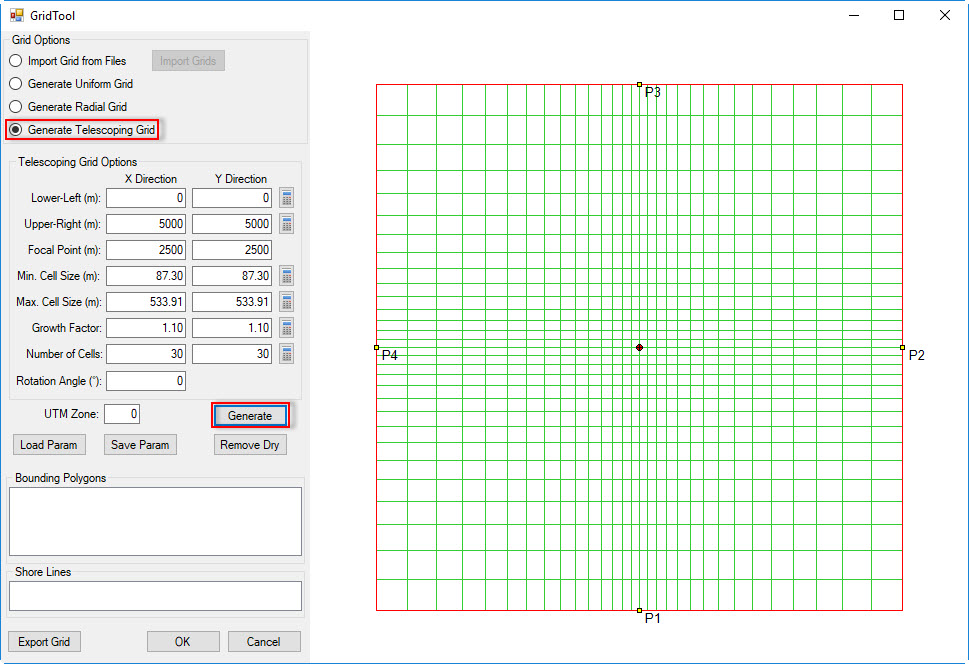After opening EE10, the user has a number of different ways to create a new model.
...
, three approached are:
- Click the Model button on the main menu toolbar, then select New Model (see Figure 1).
- The second way, click Click the New Model button directly on the main menu toolbars toolbar (see Figure 2).
- The third way, from From the keyboard, press Ctrl+N.
| Anchor | ||||
|---|---|---|---|---|
|
Figure 1 1. Create a new model (1).
| Anchor | ||||
|---|---|---|---|---|
|
Figure 2 2. Create a new model (2).
After one of these three ways is selectedused create a new model, the GridTool Grid Tool form appears. From this form, the user have has four options for assigning grids.:
- Import Grids from Files: this option allows user to import an existing grid file; the type of grid can be one of a number of formats such as including CVLGrid or RGFGrid (if . If the user has multiple sub-grids for a waterbody then the Multiple grid files check box may selected). Browse to the grid file and click OK button to finish. (see Figure 3 and Figure 4).
- Generate Uniform Grid: this option allows the user to generate a Cartesian grid. The user can define grid cell size and the number of cells (see Figure 5).
- Generate Radial Grid: this option allows the user to generate radial grid ( see Figure 6).
- Generate Telescoping Grid: this option allows the user to generate a telescoping grid ( see Figure 7).
Details of how to use these options are provided in the Model Grid section.
Anchor Figure 3 Figure 3
Figure 3 3. Import from existing grids (1).
Anchor Figure 4 Figure 4
Figure 4 4. Import from existing grids (2).
Anchor Figure 5 Figure 5
Figure 5 5. Generate Uniform Grid.
Anchor Figure 6 Figure 6
Figure 6 6. Generate Radial Grid.
Anchor Figure 7 Figure 7
Figure 7 7. Generate Telescoping Grid.
